6 Insane Details You Never Noticed About the 'Game of Thrones' "Battle of Winterfell" Set
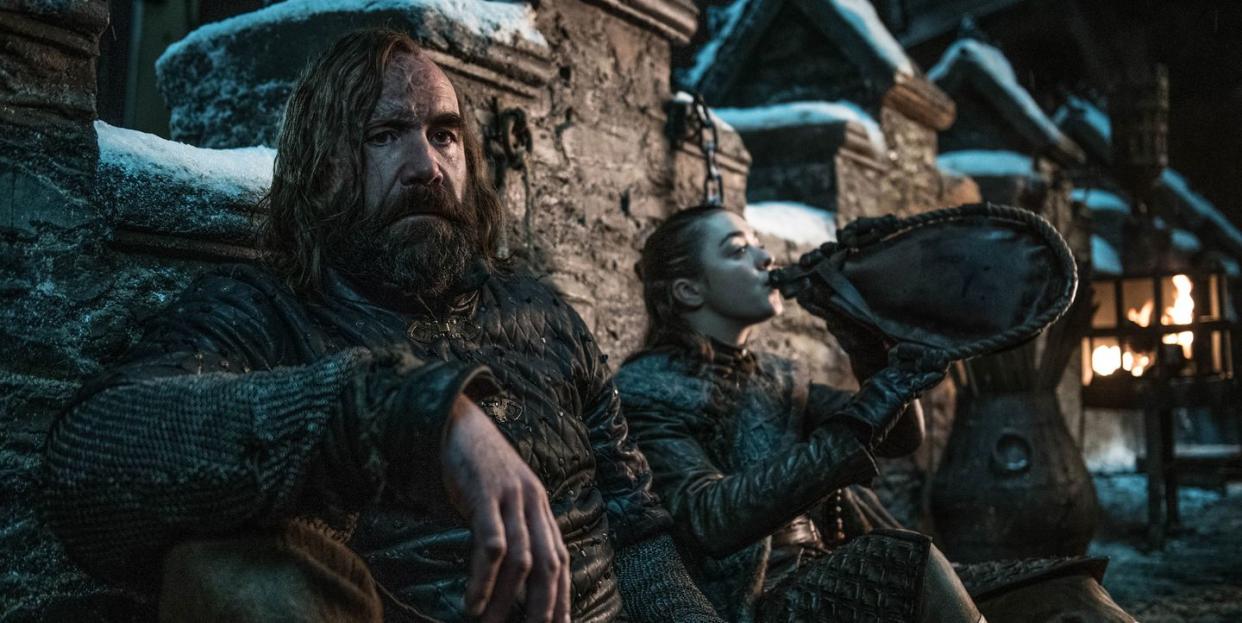
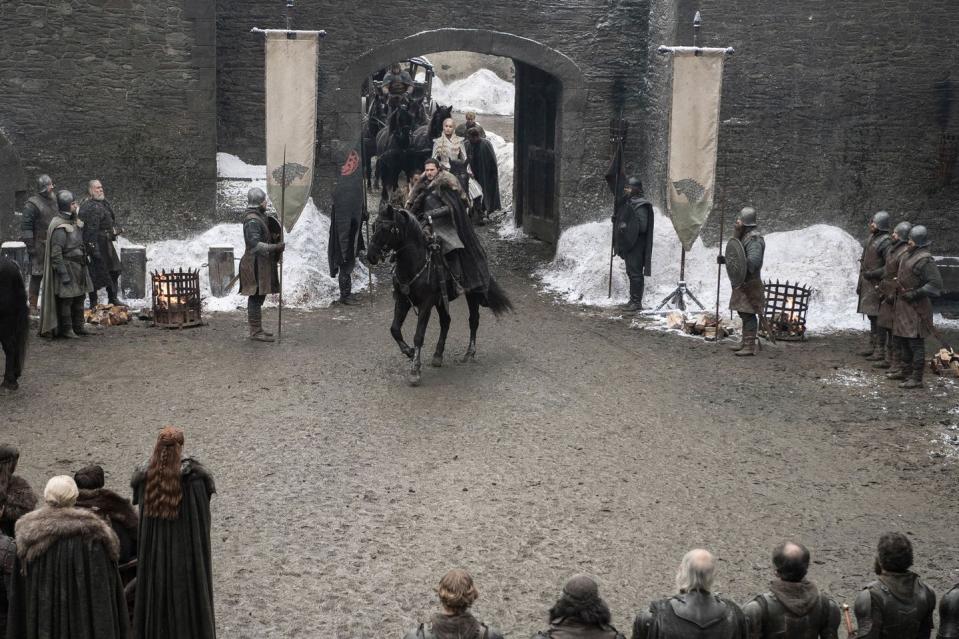
Now that there are just three episodes left in Game of Thrones, time has been upended. Sunday races by like a holiday, Monday is Spoiler Day-existing purely for internet-based discussion about the past and future episodes that infuriates non-watchers and, worse, fans who have not yet watched-and Tuesday through Saturday creep along as if they are drenched in the same mud that surrounds Winterfell Castle. Which, by the way, is real mud around a real castle.
GOT's production director Deborah Riley spilled all the details about what went into making the set of Season 8's Episode 3, "The Battle of Winterfell," with Dezeen's Gunseli Yalcinkaya. (Bless them for running the whole transcript!) And wow. This was the making of the longest battle in TV history, keep in mind. Its hour-and-22-minute run time required a grueling 55 days on set in wet, cold County Down, Northern Ireland.
"We were exhausted. What you see on camera was reflected in everybody," Riley told Yalcinkaya. "It was a fantastic thing to be involved in, but none of it was fun. We did the best we possibly could given the time that we had, and that was a huge achievement in itself. I was very proud to have survived." Spoken like a true Westerosi! Here are the six wildest details she shared from the building-and maintaining-of the set.
Warning: Some spoilers below!
Building Winterfell Castle
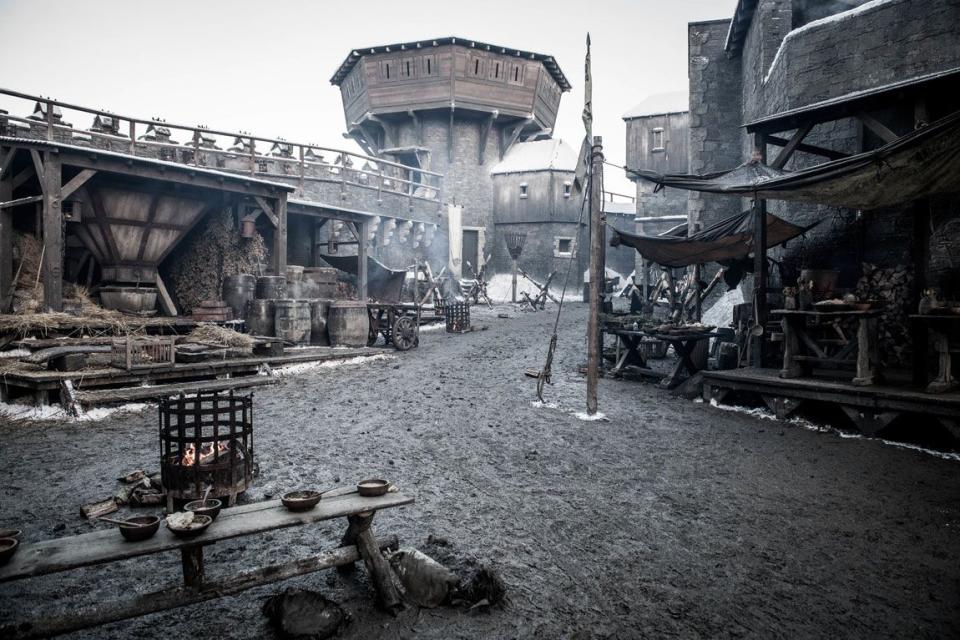
Um, it's real! "For Winterfell, we built the entire castle so the camera could be anywhere at any time," says Riley. "All of the shots inside the castle are for real." The walls are composed of plywood and hard plaster so that they'd stand up to the wet winter weather-and ankle-deep mud-of Belfast, England. "Had we had known [anything about future episodes], I'm sure they would have chosen a different location for it," she says. Weirdly, I am glad they did not.
We hadn't seen much of Winterfell before this battle, so the team took the liberty of creating never-bef0re-seen rooms and nooks and corridors. A "massive interior composite" was also constructed on a studio set nearby, where some scenes-like Arya running through the halls defending all of humanity-were shot.
Digging and Draining the Trench
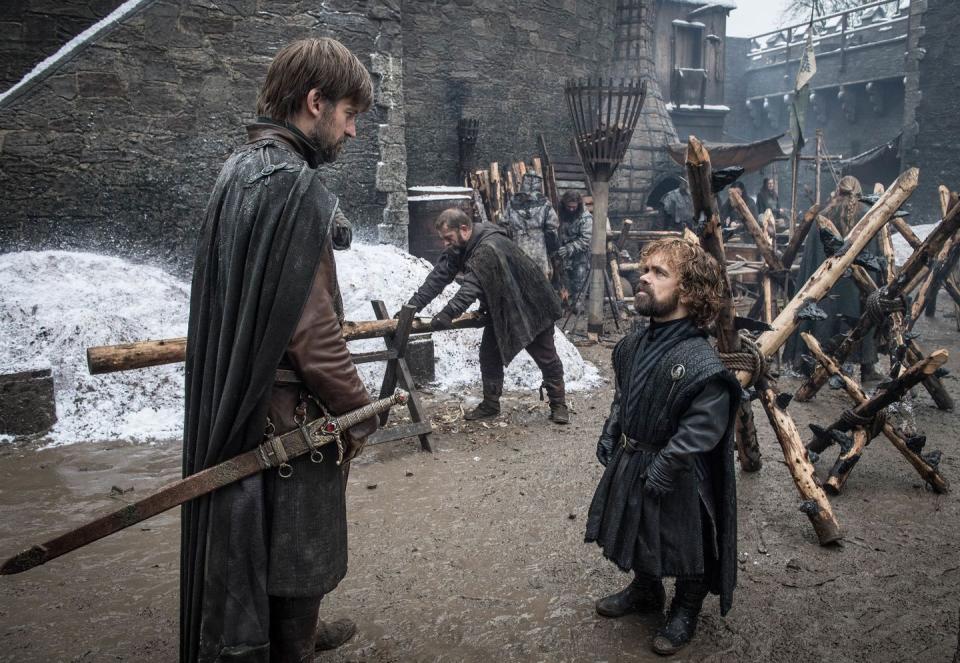
You know that gnarly, moat-like trench that our heroes dug around Winterfell and equipped with giant pointy stick bundles to keep out whitewalkers and wights? The one that worked...until it didn't?
Riley says it had to be dug out repeatedly because it was filling with water (and keep in mind, they filmed for nearly two months on this set): "It was literally scraping back the ground to create proper drainage on the property where there hadn't been before. Logistically, there was so much involved, and it required everyone to work beyond anything we'd done before."
Dealing with Paper Snow
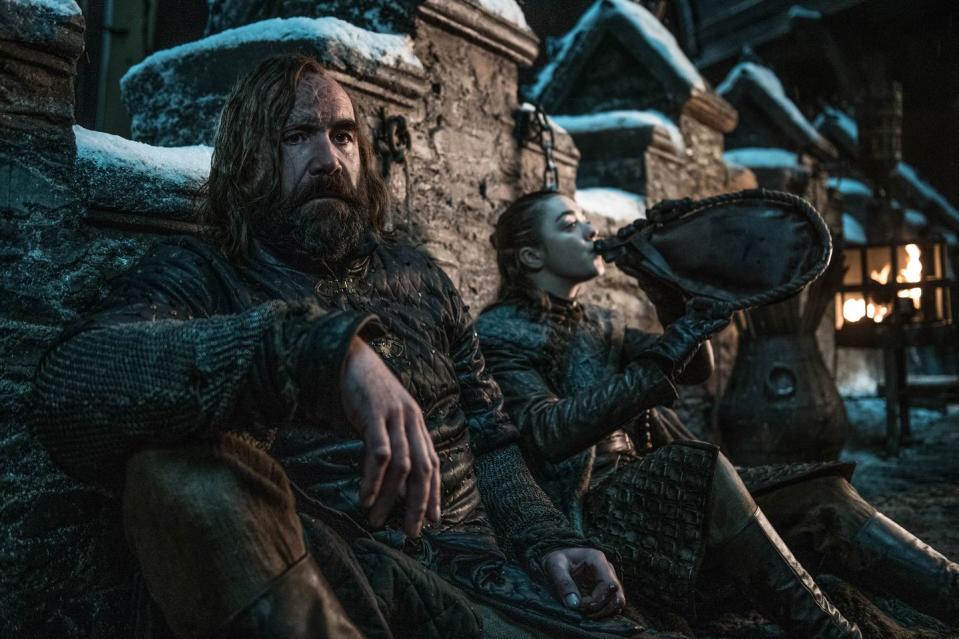
Even if you aren't a GoT stan, you know that winter is kiiiiind of a big deal in the series. "Winter is coming," isn't just the motto of House Stark and the words that launched 10,000 seasonal memes-at the Battle of Winterfell, winter is here. Which means one thing (besides the Night King coming to kill Bran): snow. Lots of it.
Incredibly, the snow that cloaks Winterfell was made of tiny flakes of paper, which Riley says had to be regularly scraped away from the soggy set lest it all turn to papier-mache: "It takes an army of people to do that, and they're not the people who get any of the glory at all. It was a phenomenal achievement."
Making Dragon Glass

One can't watch an episode of GoT without wondering how bad everyone in Westeros would smell. (Just me? Showering isn't exactly a prime plot point.) But in real life, the stinkiest stuff on set was not wildlings or the smell of death but dragonglass. All those glossy black daggers, axes, glinting details on the Unsullieds' shields, and-well, what do you call that snap-in-half sword that Gendry created for Arya?-were made from the same material that's poured onto roads to fill in potholes and cracks. Tommy Dunne heads up the team that crafted all of it.
"The fake props were actually bitumen, which stank, to be honest," says Riley. "It just smelt like roadworks. It had the look of obsidian with the cheapest budget possible." Pew.
Producing a Zillion Dead Bodies
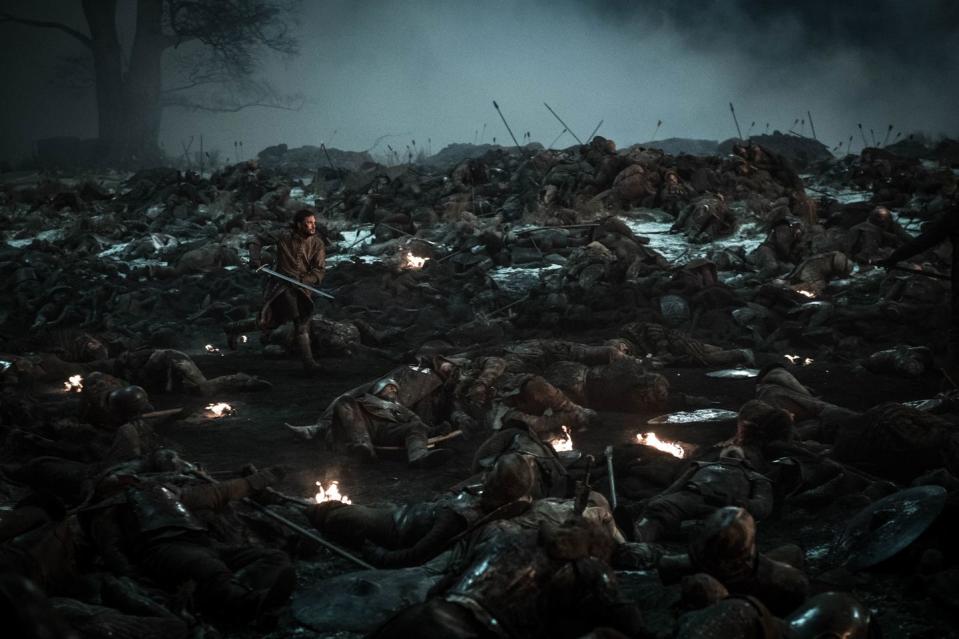
To say that a lot of people die in this episode is a vast understatement (and honestly not a spoiler-let me repeat that this is the longest battle in TV history we're talking about). A whole team was required just to clothe them and make them look beaten-up, and then another to bring them inside at the end of each shoot day so they didn't fall apart overnight. Yes, the dead must be cared for. "Otherwise, they won't last," Riley says.
Then, of course, there was the fabrication. "Not only do you need the dead people but the armor that goes with them," she explains. "This was a massive budgetary issue, as we had to clothe each one in the appropriate army uniforms." The further away the piles of dead bodies got from the camera, the less detail required, so they were fashioned in heaps. "But anything close to camera were individual bodies that would fill with water when it rained, making them very heavy," says Riley. Literal dead weight, if you will.
Dealing with Blood Types

Like fake paper snow and fake dead bodies, fake blood cannot be left in the elements for too long. Riley says that "the water, the snow and other things would turn [it] a bright pinky-orange color." Their team had to figure out which blood was best for the close-up shots and which should be used for, say, the piles of the dead you see out in the distance.
"There's different blood you can buy for different prices, but with the amount we had to use, we had to be measured with the expensive blood and be careful with what blood we were putting where," she explains. And you thought budgeting for rent and utilities was an ordeal.
Follow House Beautiful on Instagram.
('You Might Also Like',)


